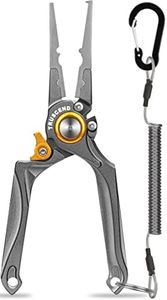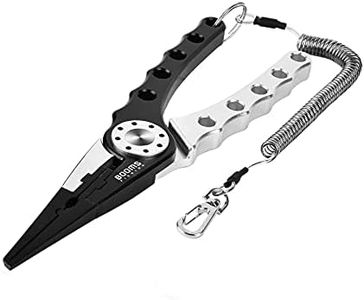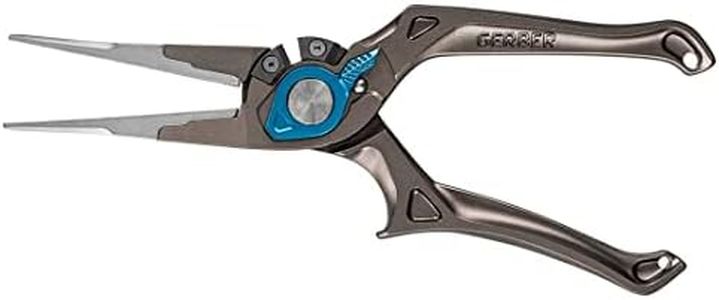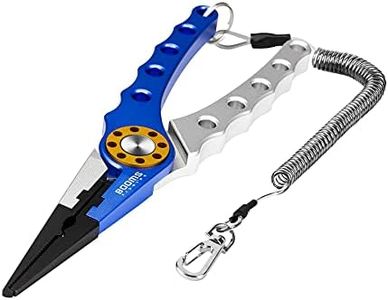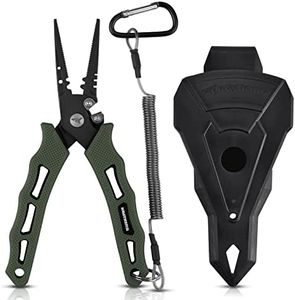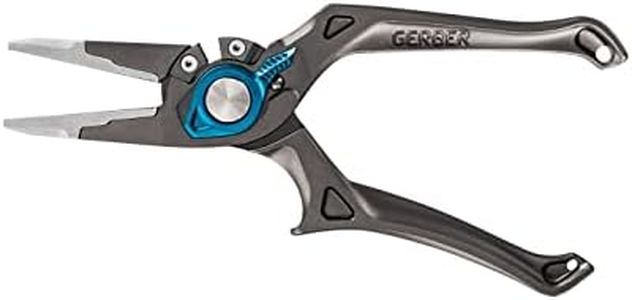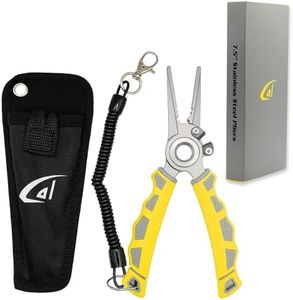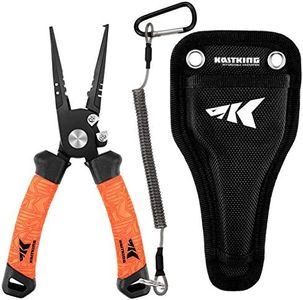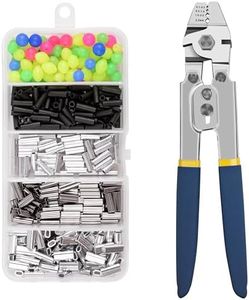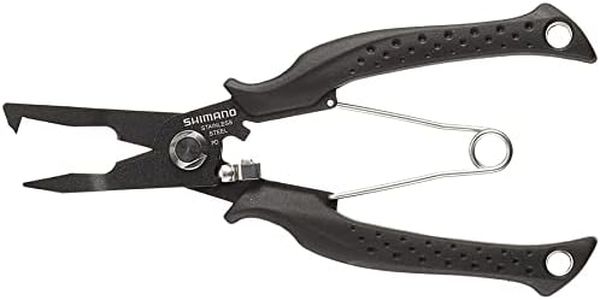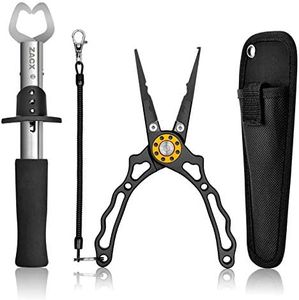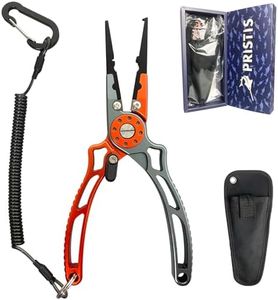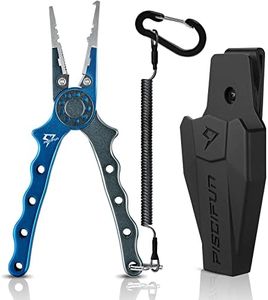We Use CookiesWe use cookies to enhance the security, performance,
functionality and for analytical and promotional activities. By continuing to browse this site you
are agreeing to our privacy policy
10 Best Fishing Pliers
From leading brands and best sellers available on the web.By clicking on a link to a third party's website, log data is shared with that third party.
Buying Guide for the Best Fishing Pliers
When it comes to buying fishing pliers, it's important to remember that the right tool can make your fishing experience much easier and more enjoyable. Fishing pliers are specialized tools used for cutting lines, removing hooks, crimping, and splitting rings. Since you'll be dealing with different water conditions, fish sizes, and your own preferences, choosing the best fishing pliers means looking at features that suit your situation. Understanding the main features will help you pick a pair that lasts, performs well, and feels comfortable in your hand.MaterialMaterial tells you what the pliers are made of, and that's important because fishing gear gets wet and can rust over time. Most fishing pliers are made of stainless steel or aluminum. Stainless steel is tough and resists corrosion pretty well, but higher grades do even better in saltwater. Aluminum pliers are lighter and also good against rust, but they can be a bit less tough. If you fish mainly in freshwater, regular stainless steel or aluminum might be enough. If you spend a lot of time in saltwater, look for higher-grade stainless steel or anodized aluminum to prevent rust and corrosion.
Jaw DesignJaw design refers to the shape and features at the working end of the pliers. Some jaws are straight, while others are split-ring, serrated, or have crimping notches. Split-ring jaws are made to open small metal rings, handy if you frequently change fishing lures. Serrated or textured jaws grip hooks and wires more securely, while smooth jaws may be better for delicate work. For most users, a versatile jaw with some grip or a built-in cutter is a good all-rounder. If you have specialized needs, like working with split rings, make sure the jaw matches your use.
CuttersCutters are built into many fishing pliers to help you snip fishing line, leaders, or wires. Some cut only mono or fluorocarbon, while others can handle braided line or metal wire. The type and sharpness of the cutter matters—tungsten carbide inserts are very sharp and hold their edge, making them good for tough lines. Think about whether you use just standard fishing line or also stronger, braided lines, and choose pliers with a cutter that matches your needs.
Size and WeightSize and weight affect how the pliers feel in your hand and how easy they are to carry. Compact pliers are portable and fit well in tackle boxes, but larger ones give you more leverage and reach for big fish. Heavier pliers might be sturdier but could be tiring to carry or use over long periods. Consider if you want a pocket-sized tool for light fishing, or a bigger, stronger set for catching larger fish.
Handle GripThe handle grip refers to the material and shape of the pliers' handles. Comfortable, non-slip grips matter because fishing can make your hands wet and slippery. Rubberized or textured handles help keep a secure hold, even when wet, and reduce hand fatigue during long sessions. If you fish for many hours or in rough conditions, prioritize comfort and grip.
Spring-Loaded MechanismA spring-loaded mechanism opens the pliers automatically after you squeeze them, making one-handed use much easier—an important feature when holding a rod or fish. Not all pliers have this, but it can be very handy if you often need to work quickly or multitask.
Corrosion ResistanceCorrosion resistance is the ability of the pliers to withstand rust from water and salt exposure. This depends on coatings, material quality, and build. High corrosion resistance is critical if you fish in saltwater or don't always dry your tools after use. For freshwater or occasional anglers, standard resistance may suffice, but for heavy use, it's wise to look for extra corrosion protection.
Lanyard or SheathSome fishing pliers come with a lanyard or sheath for easy carrying and to prevent dropping them in the water. A lanyard secures pliers to your belt or vest, while a sheath protects them and makes them easy to grab. If you move around a lot or fish on a boat, having one or both could save you from losing your tool.
